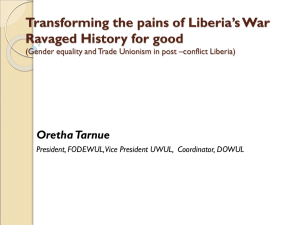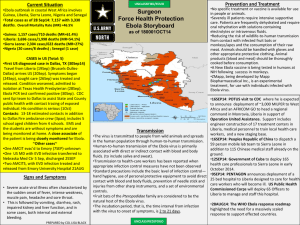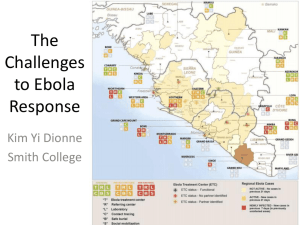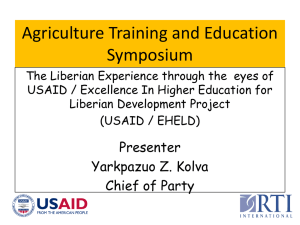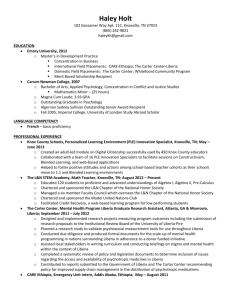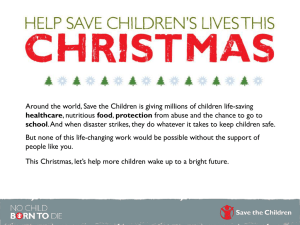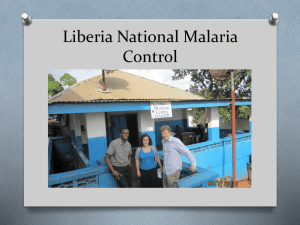Brief Report on Liberia/Sierra Leone border areas
advertisement
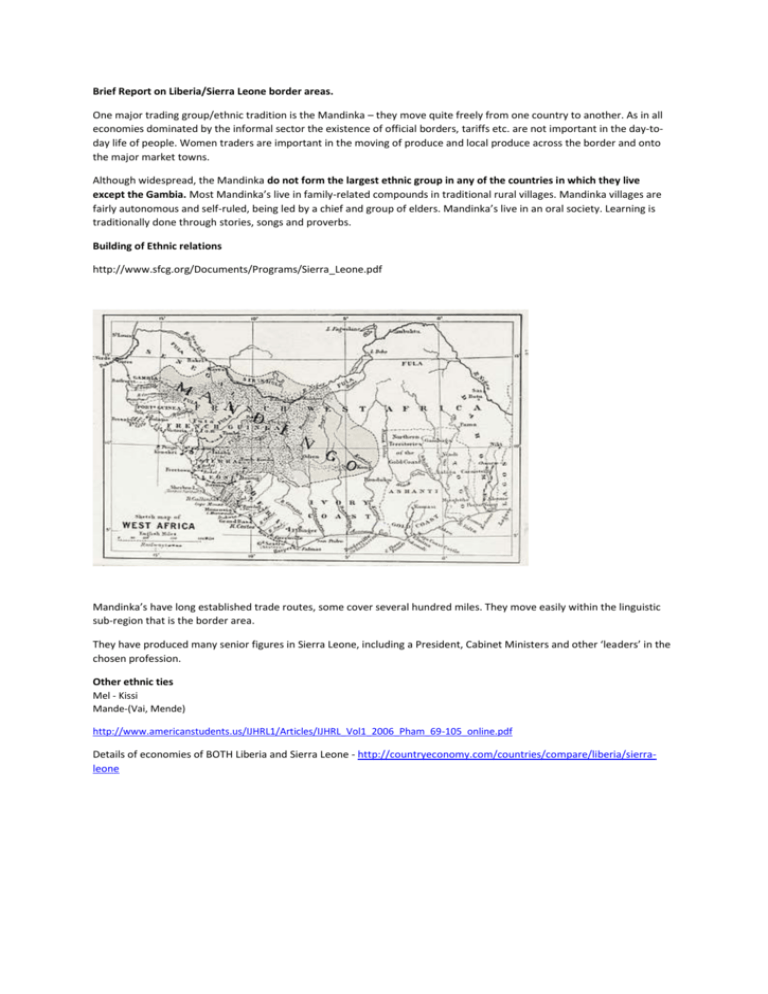
Brief Report on Liberia/Sierra Leone border areas. One major trading group/ethnic tradition is the Mandinka – they move quite freely from one country to another. As in all economies dominated by the informal sector the existence of official borders, tariffs etc. are not important in the day-today life of people. Women traders are important in the moving of produce and local produce across the border and onto the major market towns. Although widespread, the Mandinka do not form the largest ethnic group in any of the countries in which they live except the Gambia. Most Mandinka’s live in family-related compounds in traditional rural villages. Mandinka villages are fairly autonomous and self-ruled, being led by a chief and group of elders. Mandinka’s live in an oral society. Learning is traditionally done through stories, songs and proverbs. Building of Ethnic relations http://www.sfcg.org/Documents/Programs/Sierra_Leone.pdf Mandinka’s have long established trade routes, some cover several hundred miles. They move easily within the linguistic sub-region that is the border area. They have produced many senior figures in Sierra Leone, including a President, Cabinet Ministers and other ‘leaders’ in the chosen profession. Other ethnic ties Mel - Kissi Mande-(Vai, Mende) http://www.americanstudents.us/IJHRL1/Articles/IJHRL_Vol1_2006_Pham_69-105_online.pdf Details of economies of BOTH Liberia and Sierra Leone - http://countryeconomy.com/countries/compare/liberia/sierraleone Bo Waterside is a town in Grand Cape Mount County, Liberia on the Mano River. It was a key border crossing between Liberia and Sierra Leone until 1990, when it closed after the launch of Charles Taylor's National Patriotic Front of Liberia invasion from Sierra Leone. The border crossing officially re-opened in June 2007 in an official ceremony involving government officials, humanitarian workers and significant amounts of foreign press coverage The Mano River originates in the Guinea Highlands in Liberia and forms part of the Liberia – Sierra Leone border. The districts through which the river flows include the Parrot's Beak area of Guinea, Liberia's Lofa County and the Kono and Kailahun District of Sierra Leone. Liberia and Sierra Leone founded the Mano River Union in 1973, Guinea joined in 1980. It was reactivated in 2004 as a customs and economic union; Côte d'Ivoire joined in 2008. The road on the Sierra Leonean side of the border is in deplorable condition, but on the Liberian side the road is tarred from Bo-Waterside to Monrovia. Visas are needed to transit in both Guinea and Liberia. It is best to get all your travel documents before travelling to avoid harassment at the border. Also, please see your home country's travel advice for this region before embarking on your journey. The information below is provided courtesy of Bradt Travel Guide for Sierra Leone: "A watertight set of papers for a vehicle, if it is your own includes ownership documents, a record of the vehicle, chassis and engine numbers, up-to-date insurance, and a carnet de passage issued by the RAC (www.rac.co.uk) in the UK. This is essentially a vehicle passport to convince custom officials that you are bringing in the vehicle into the country temporarily and will not sell it in the country without paying the necessary import duties. Some useful information is available in the following: https://www.wfp.org/content/support-populations-areas-affected-ebola-outbreak-guinea-liberia-and-sierra-leone An example of a more traditional crossing between Liberia and Sierra Leone KEY MESSAGES Market functioning and trade flows are still below-normal but are slowly improving across the region compared to previous months due to the lifting of official movement restrictions (Liberia), district-level quarantines (Sierra Leone), and official border closures (across the region, except for Liberia). Despite improving market functioning, household incomes from many typical sources remain below average, causing household purchasing power to remain atypically weak and limiting food access for poor households reliant on market purchases to meet basic needs. As food stocks from recent harvests deplete, the population facing Stressed (IPC Phase 2) and Crisis (IPC Phase 3) food security outcomes is expected to increase in the coming months More Detailed Reports http://reliefweb.int/sites/reliefweb.int/files/resources/Ebola_SR_2015_1_31_1.pdf http://www.indexmundi.com/factbook/compare/sierra-leone.liberia/economy Sierra Leone Trade Liberia Liberia Exports 11 February 2015, 18:41:00 | Central Bank of Liberia Exports in Liberia decreased to 28 USD Million in December of 2014 from 40.80 USD Million in November of 2014. Exports in Liberia averaged 22.08 USD Million from 2003 until 2014, reaching an all-time high of 83.50 USD Million in March of 2012 and a record low of 0 USD Million in August of 2003. Exports in Liberia is reported by the Central Bank of Liberia. Liberia’s main export is rubber (65 percent of total exports), followed by diamonds, gold and iron (17 percent). Liberia exports mainly to: North America (32 percent of total exports), Europe (30 percent) and Middle East (30 percent). Liberia Imports Imports in Liberia increased to 96.50 USD Million in December of 2014 from 79 USD Million in November of 2014. Imports in Liberia averaged 54.54 USD Million from 2003 until 2014, reaching an all-time high of 171.50 USD Million in January of 2013 and a record low of 3.40 USD Million in August of 2003. Imports in Liberia is reported by the Central Bank of Liberia. Liberia main imports are: fuel (35 percent of total imports), machinery (25 percent) foodstuffs and manufactured goods. Liberia imports mainly from North America (32 percent of total imports) and the Middle East (28 percent Liberia Balance of Trade 11 February 2015, 18:41:00 | Central Bank of Liberia Liberia recorded a trade deficit of 68.50 USD Million in December of 2014. Balance of Trade in Liberia averaged -32.15 USD Million from 2003 until 2014, reaching an all-time high of 15.10 USD Million in January of 2005 and a record low of -145.10 USD Million in January of 2013. Balance of Trade in Liberia is reported by the Central Bank of Liberia. Liberia’s systemic trade deficit is a result of high imports. Liberia is a net importer of fuel (35 percent of total imports) and machinery (25 percent). The main exports are: rubber (60 percent of total exports), gold, diamonds and iron. Liberia’s main trading partners are the United States, Canada and the Middle East. Best Wishes, John
